Japanese researchers have successfully produced functional mouse eggs entirely in cell culture. For the first time, Katsuhiko Hayashi and colleagues generated mature egg cells using pluripotent stem cells derived from both embryos and adults. The team subjected the new egg cells to in vitro fertilization to develop embryos, which were then transferred into surrogate mice. Some […]
Tag: biology
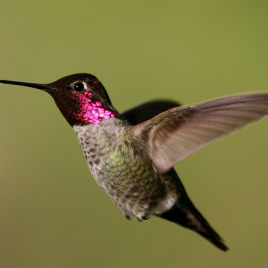
How the hummingbird turns
Hummingbirds control their turning velocity and radius using body orientation and asymmetrical wingbeats, according to a new study. Using a feeder tracking experiment researchers found the birds control their turning velocity by altering their physical orientation, and control their turning radius by beating their wings at slightly different speeds. Researchers filmed six adult male […]
Learning from the naked mole rat
When most mammals, including humans, are in a low-oxygen environment they begin to hyperventilate to increase their oxygen uptake. However this is an energetically costly way to increase oxygen levels in the body. The naked mole rat is unique from other mammals; when it is exposed to hypoxia (low oxygen levels) it does not begin […]
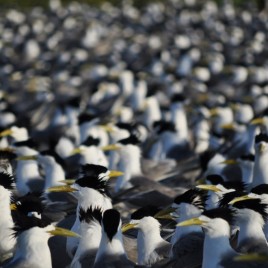
A bird’s eye view of birds
The view seen by humans (left) and drones (right) when trying to count seabird populations from either the ground or the air. (Image credits: Jarrod Hodgson) A new study compares the accuracy of monitoring of sea bird colonies by UAVs and traditional human ground counts and demonstrates that population estimates can be improved with this […]
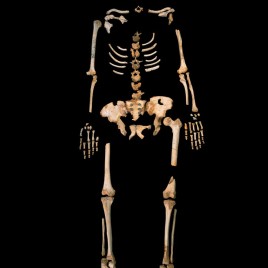
Filling in the family tree: The Sima de los Huesos hominins
Hominins found in the Sima de los Huesos (“pit of bones”) in northern Spain are more closely related to Denisovans than Neanderthals, according to genetic analysis. Until now it has been unclear how the 28 individuals were related to other hominins living during the Late Pleistocene. Analyzing the mitochondrial DNA lead the authors to conclude […]
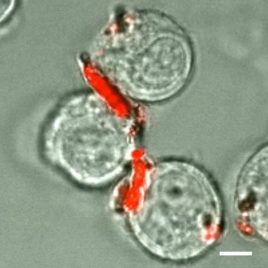
Improving the cellular backpack
Medicine can be delivered to specific parts of the body by fitting it inside a “backpack” and attaching it to white blood cells. This targeted drug delivery means other tissues of the body aren’t affected, and side effects are limited. Original research presented at a meeting of the American Chemical Society on March 17, 2015.
Cutting away at the mystery of leafcutting bees
Leafcutting bees use pieces of various plant leaves to build their nests, however determining which plants they prefer has been a challenge. In the past, researchers had to either observe leafcutting bees visiting a plant or identify pieces of leaf in the nest in to know which plant the bees relied on. Now, using DNA […]
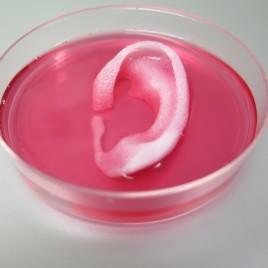
Printing living bones may be possible
Printing bones and cartilage could be the way of the future. Using specialized ‘bioprinters’, researchers have been able to “print” cells into layered patterns reconstructing human body parts. Current 3D printers are unable to create bone and cartilage with enough structural stability. By combining bioprinters with biodegradable polymer materials researchers were able to “create” the […]
Visualizing the blood-brain barrier
Using a microscope to see inside living tissue, researchers have found how the parasite Toxoplasma gondii passes through the blood brain barrier to invade the central nervous system. The researchers hope this finding will help develop effective strategies to stop the parasite from entering and damaging the brain. T. gondii infects about 30 per cent of […]
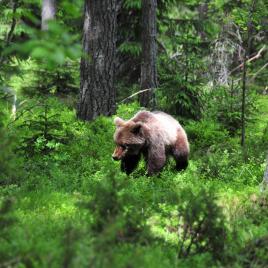
How bears gain weight without getting obese
Bears eat intensively to put on weight for winter hibernation but don’t seem to suffer the negative health effects of obesity, thanks to the microbiota in their digestive tract. By analyzing fecal samples researchers found the microbiota in a bear’s digestive tract changes when the bear is preparing for hibernation. The researchers believe some of […]
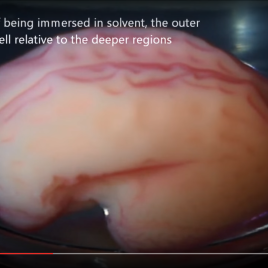
Why the brain has its folds
The folds on the surface of the human brain exist because of physics, not biology, according to a new study using 3D printing. The researchers believe their results suggest that physical forces play a crucial role in neurodevelopment, and may provide insights into diagnosing and treating some neurological disorders. The study proves a model from […]
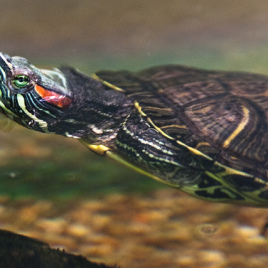
The secret to surviving without oxygen
The Red-eared slider, a species of turtle, is able to survive months of low oxygen, without apparent damage to the brain tissue. Researchers believe they have now found the secret to this ability in the mitochondria of the brain cells. The mitochondria, where the respiration and energy processes of the brain take place, of Red-eared […]
Mammals, including humans, shape their microbiome
Humans create small molecules inside the GI tract to help regulate the composition of gut microbes and to protect against intestinal diseases. The researchers believe the findings of the study reveal a host defense mechanism and show that microRNAs can be used to regulate the microbiome of individuals. The researchers found microRNAs produced by intestinal cells in both mice and humans regulate the activity […]
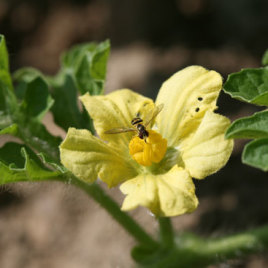
Don’t forget the other pollinators
Butterflies, wasps, beetles and flies might not be as effective pollinators as bees but new research shows their impact shouldn’t be discounted. Non-bee pollinators visit more flowers than bees so that even if they’re not such effective pollinators, their rates pollination are similar to bees. The analysis of 39 field studies revealed there is […]
Research is too conservative
A pair of papers calls for researchers to take greater risks when choosing research problems to study in order to speed up scientific discovery and innovation. The two papers, one from PNAS and another from the American Sociological Review, used computer models to analyze millions of research papers. The study published by PNAS found that […]
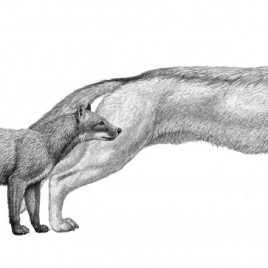
Dogs evolved with climate change
The evolution of North American dogs shows that evolution can be a direct consequence of climate change, and is not always associated with an “arms race” between ancient dogs and their prey. Researchers studied fossil elbows and teeth of 32 species of dogs from 40 million years to two million years ago, the same period when climate […]
